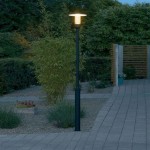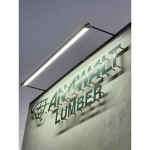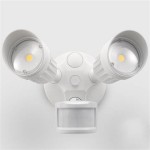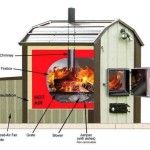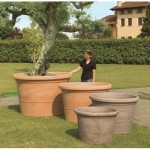Nautical Outdoor Lighting Sconces: Illuminating Coastal Style
Nautical outdoor lighting sconces are a significant aspect of exterior residential and commercial design, particularly in coastal areas or for individuals seeking to evoke a maritime aesthetic. These fixtures serve not merely as sources of illumination but also as integral design elements that contribute to the character and ambiance of a space. Their functionality extends from providing safety and security to enhancing the visual appeal of a property, thereby increasing its overall value and enjoyment.
The selection of appropriate nautical outdoor lighting sconces requires careful consideration of several factors, including material durability, light output, energy efficiency, and aesthetic compatibility with the existing architectural style. The harsh environmental conditions prevalent in coastal regions necessitate the use of robust materials capable of withstanding saltwater corrosion, extreme temperatures, and high winds. Furthermore, the choice of light source, whether incandescent, LED, or halogen, directly impacts energy consumption and maintenance requirements.
This article aims to provide a comprehensive overview of nautical outdoor lighting sconces, exploring their various design features, material considerations, installation guidelines, and maintenance practices. By understanding these aspects, homeowners and designers alike can make informed decisions that result in both aesthetically pleasing and functionally superior outdoor lighting solutions.
Design and Aesthetic Considerations
The design of nautical outdoor lighting sconces draws heavily on maritime history and nautical symbolism. Common design features include caged lights reminiscent of ship lanterns, porthole-inspired shapes, and finishes that emulate aged brass, copper, or weathered iron. These design elements are intended to create a visual connection to the sea, evoking a sense of adventure, history, and coastal charm.
Aesthetic compatibility is paramount when selecting nautical sconces. The fixtures should complement the architectural style of the building. For example, on a contemporary home, streamlined sconces with clean lines and a brushed nickel finish might be more appropriate than ornate, antique-inspired designs. Conversely, on a traditional coastal cottage, a more rustic sconce with a distressed finish would likely be a better fit.
The size of the sconce relative to the wall space is also crucial. An overly large sconce can overwhelm a small porch, while a too-small sconce can appear insignificant on a large exterior wall. Careful measurement and consideration of scale are essential to achieving a balanced and visually appealing outcome. The spacing between sconces is equally important; uniform spacing creates a sense of order and harmony, while strategic placement can highlight architectural features or create focal points.
Beyond the overall design, attention should be paid to the details of the sconce. The type of glass used, the design of the cage, and the presence of decorative elements all contribute to the overall aesthetic. Clear glass provides maximum light output, while frosted or seeded glass diffuses the light, creating a softer, more ambient glow. The choice of glass should be based on the desired level of illumination and the overall visual effect.
Material Durability and Environmental Resistance
The primary challenge in selecting outdoor lighting, particularly in coastal environments, is ensuring the durability of the materials used. Saltwater corrosion, UV exposure, and extreme weather conditions can rapidly degrade fixtures constructed from unsuitable materials. Therefore, careful consideration must be given to the material composition of nautical outdoor lighting sconces.
Brass and copper are commonly used materials due to their inherent resistance to corrosion. However, even these materials require proper finishing and maintenance to prevent tarnishing and pitting. Powder coating is a popular finishing technique that provides a durable, weather-resistant barrier. Regular cleaning with a mild detergent can help to maintain the luster of brass and copper fixtures.
Stainless steel is another excellent choice for coastal lighting. Marine-grade stainless steel, specifically 316 stainless steel, offers superior corrosion resistance compared to standard stainless steel alloys. This material is often used in harsh marine environments, making it ideal for outdoor lighting applications in coastal areas. While stainless steel is more expensive than other materials, its longevity and durability can justify the initial investment.
Aluminum is a lightweight and relatively inexpensive material that can be used for outdoor lighting. However, aluminum is more susceptible to corrosion than brass, copper, or stainless steel. When using aluminum, it is essential to choose a fixture with a high-quality powder coat finish that provides a durable protective layer. Regular inspection and maintenance are necessary to prevent corrosion from developing beneath the coating.
Polycarbonate and other durable plastics are sometimes used in nautical outdoor lighting sconces, particularly for lenses and diffusers. These materials are lightweight, impact-resistant, and resistant to UV degradation. However, it is important to choose high-quality plastics that are specifically designed for outdoor use, as cheaper plastics can become brittle and discolored over time.
In addition to the primary materials, the hardware used in the sconce, such as screws and fasteners, should also be corrosion-resistant. Stainless steel or brass hardware is recommended to prevent rust and ensure the longevity of the fixture.
Installation Guidelines and Safety Considerations
Proper installation of nautical outdoor lighting sconces is crucial for both safety and performance. Incorrect installation can lead to electrical hazards, water damage, and premature fixture failure. It is highly recommended to consult a qualified electrician for the installation of any outdoor lighting fixture, especially if the installation involves working with existing wiring or creating new circuits.
Before beginning the installation, it is essential to ensure that the power to the circuit is turned off at the main circuit breaker. This will prevent accidental electric shock. It is also important to review the manufacturer's instructions carefully and to gather all necessary tools and materials before starting the installation process.
Outdoor lighting fixtures must be properly grounded to prevent electrical hazards. The grounding wire should be connected to a properly grounded junction box. If the existing wiring does not include a grounding wire, it is necessary to consult an electrician to update the wiring to meet current safety codes. The junction box itself should be weatherproof and properly sealed to prevent water from entering and causing damage.
When mounting the sconce to the wall, it is important to use appropriate mounting hardware and to ensure that the fixture is securely attached to a solid surface. For masonry walls, masonry screws or anchors should be used. For wood siding, wood screws should be used that are long enough to penetrate into a stud or other solid framing member. If the wall is not structurally sound, it may be necessary to add additional support before installing the sconce.
Wiring connections should be made using weatherproof wire connectors to prevent corrosion and water damage. The wire connectors should be properly tightened to ensure a secure connection. The wires should be carefully tucked into the junction box to prevent them from being pinched or damaged when the sconce is mounted.
Once the sconce is installed, it is important to test the fixture to ensure that it is working properly. Turn the power back on at the circuit breaker and check to see if the light turns on. If the light does not turn on, check the wiring connections and the light bulb to make sure that they are properly installed.
Safety is paramount during the installation process. Wear appropriate safety gear, such as gloves and safety glasses, to protect yourself from injury. If you are not comfortable working with electricity, it is best to hire a qualified electrician to perform the installation.
Energy Efficiency and Light Source Options
Energy efficiency is an increasingly important consideration when selecting outdoor lighting. Choosing energy-efficient light sources can significantly reduce electricity consumption and lower energy bills. Nautical outdoor lighting sconces are available with a variety of light source options, each with its own advantages and disadvantages.
Incandescent bulbs are the traditional light source for outdoor lighting. While they provide a warm, inviting light, they are also the least energy-efficient option. Incandescent bulbs consume a significant amount of energy and have a relatively short lifespan. They are being increasingly replaced by more energy-efficient alternatives.
Halogen bulbs are more energy-efficient than incandescent bulbs, but they still consume more energy than LED bulbs. Halogen bulbs produce a bright, white light that is similar to natural daylight. However, they also generate a significant amount of heat, which can be a safety concern in some applications.
LED bulbs (Light Emitting Diodes) are the most energy-efficient light source currently available. LED bulbs consume significantly less energy than incandescent or halogen bulbs and have a much longer lifespan. They are also available in a wide range of colors and brightness levels. LED bulbs are becoming the standard for outdoor lighting applications.
When selecting LED bulbs for nautical outdoor lighting sconces, it is important to choose bulbs that are specifically designed for outdoor use. Outdoor LED bulbs are typically sealed to protect them from moisture and dust. They are also designed to operate in a wide range of temperatures.
The color temperature of the light is another important consideration. Color temperature is measured in Kelvin (K). Warm white light has a color temperature of around 2700K, while cool white light has a color temperature of around 5000K. The choice of color temperature depends on the desired ambiance. Warm white light creates a cozy, inviting atmosphere, while cool white light provides brighter, more focused illumination.
In addition to energy efficiency and light output, it is also important to consider the lifespan of the light bulb. LED bulbs typically have a lifespan of 25,000 hours or more, which means that they will need to be replaced less frequently than incandescent or halogen bulbs. This can save time and money in the long run.
Maintenance and Care
Regular maintenance is essential to prolong the lifespan and maintain the appearance of nautical outdoor lighting sconces. The frequency of maintenance depends on the environmental conditions and the materials used in the fixture. Sconces located in coastal areas require more frequent maintenance than those located inland.
The primary maintenance task is cleaning the sconces to remove dirt, dust, and salt buildup. This can be done using a soft cloth and a mild detergent. Avoid using abrasive cleaners or scouring pads, as these can scratch the finish of the fixture. For stubborn stains, a specialized metal cleaner may be necessary.
Regularly inspect the sconces for signs of corrosion, rust, or damage. If corrosion or rust is detected, it should be addressed promptly to prevent it from spreading. Minor corrosion can often be removed with a wire brush and a rust converter. For more severe corrosion, it may be necessary to replace the affected part.
Check the wiring connections periodically to ensure that they are still secure and corrosion-free. Loose or corroded wiring connections can cause electrical problems and may pose a safety hazard. If any loose or corroded wiring connections are found, they should be repaired or replaced immediately.
Replace light bulbs as needed. When replacing light bulbs, be sure to use the correct type and wattage. Using the wrong type or wattage can damage the fixture or create a fire hazard. Before replacing a light bulb, turn off the power to the circuit at the main circuit breaker.
For sconces with glass lenses or diffusers, clean the glass regularly to maintain optimal light output. Use a glass cleaner and a soft cloth to remove dirt and smudges. Avoid using paper towels, as these can leave lint on the glass.
Consider applying a protective coating to the sconces to help protect them from the elements. A clear coat of polyurethane or a specialized metal protector can help to prevent corrosion and fading. Follow the manufacturer's instructions carefully when applying any protective coating.

Small Hooded Wall Mount Shiplights

Brass Nautical Light Outdoor Lighting Ship Lights

Volume Lighting 1 Light White Polycarbonate Outdoor Nautical Wall Lantern Sconce Mount V9725 6 The Home Depot

10 Of The Best Nautical Outdoor Lights For 2024 Lighting

Nautical Lighting Bulkhead Brass Coastal Outdoor

Large Hooded Wall Mount Shiplights

Nautical Outdoor Lighting Visualhunt

Nautical Outdoor Wall Lights Destination Lighting

Nautical Outdoor Lighting And Dock With Coastal Style

Exterior Nautical Style Wall Light In Brass
Related Posts
